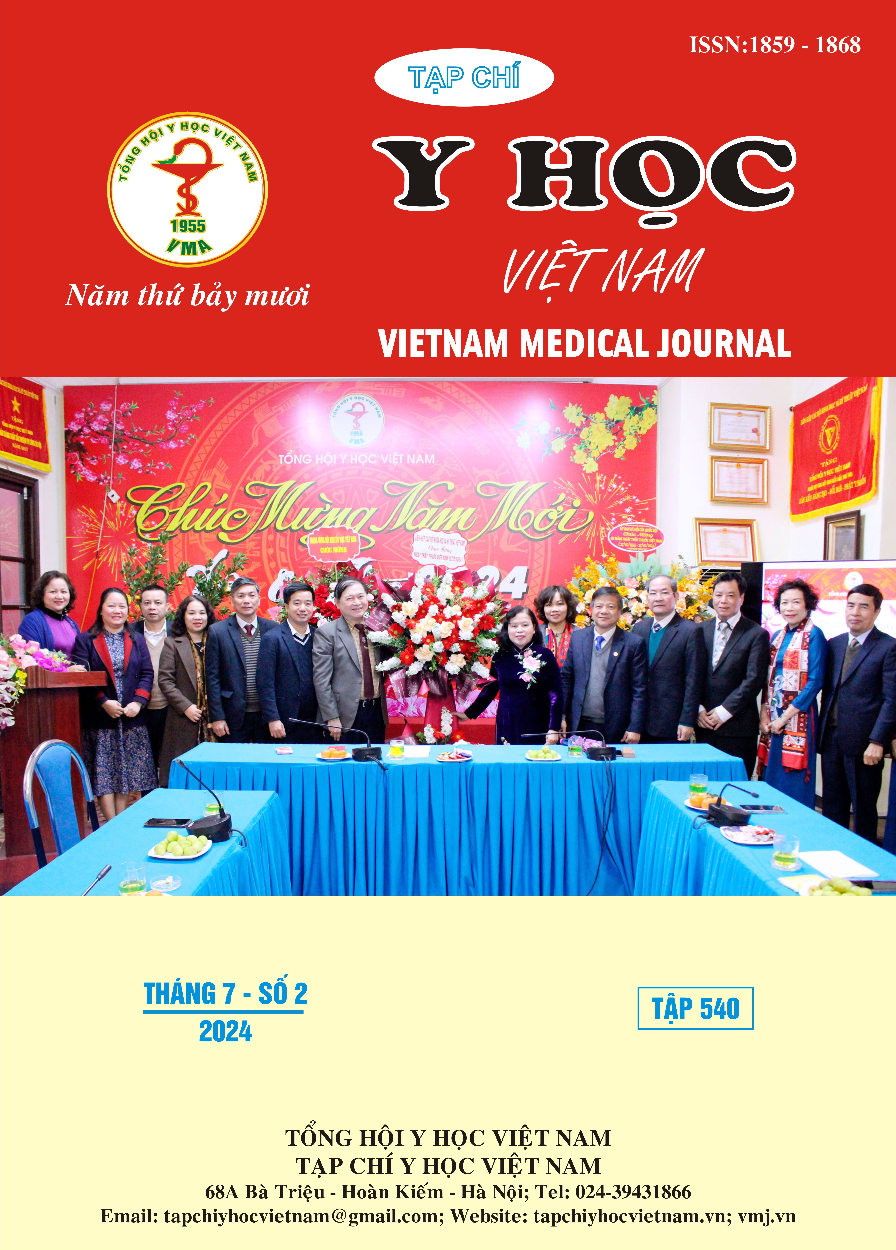EVALUATION OF IN-PATIENT TREATMENT RESULTS FOR PATIENTS WITH COMPLEX ZYGOMATIC-ORBITAL FRACTURES AT VIET DUC UNIVERSITY HOSPITAL
Main Article Content
Abstract
Background: Maxillofacial fracture is becoming one of the most common types of injuries. Among them, fractures of the zygomatico-archial complex account for a high proportion of maxillofacial fractures, accounting for up to 40%. Patients and methods: A cross-sectional descriptive study was conducted. The study included 244 medical records of patients with complex zygomatic-orbital fractures from 01/2022 to 12/2022. Results: Males accounted for 77.5% and females for 22.5%. The average age was 32.4 years. Main clinical symptoms: Facial asymmetry, significant swelling in 98.4%, facial wounds in 63.5%, restricted mouth opening in 41.8%, numbness in 21.3%. Associated injuries: Skull trauma (33.2%), limb injuries (14.8%). Zingg classification of fractures: Type B (49.2%), Type C (26.6%). Surgical indications for combined bone fixation were 88.9%, while conservative treatment and orbital floor reconstruction were 11.1% and 5.3%, respectively. Titanium screws were used in 93.5% of cases, with only 6.5% using absorbable screws. 90% of orbital floor reconstructions used autogenous bone grafts. Screw fixation at the zygoma-maxillary buttress, and orbital lateral rim was most commonly employed. Early complications included wound infections 3.2%, fever 1.8% and postoperative bleeding 0,5%. Conclusion: Treatment of zygomatic-orbital complex fractures requires a combination of surgical methods of bone fixation with screws and orbital floor reconstruction to bring optimal aesthetic and functional results for the patient
Article Details
Keywords
Complex zygomatic-orbital fractures, Facial trauma, Zingg classfication.
References
2. Ogata H, Sakamoto Y, Kishi K. A New Classification of Zygomatic Fracture Featuring Zygomaticofrontal Suture: Injury Mechanism and a Guide to Treatment. Plastic Surgery: An International Journal. 2013;2013:6. doi:10.5171/ 2013.383486
3. Zingg M, Chowdhury K, Lädrach K, Vuillemin T, Sutter F, Raveh J. Treatment of 813 zygoma-lateral orbital complex fractures. New aspects. Archives of otolaryngology - head & neck surgery. Jun 1991;117(6):611-20; discussion 621-2. doi:10.1001/archotol.1991.01870180047010
4. Mabika BDD, Garango A, Lahmiti S, et al. Update on the management of orbitozygomatic fractures. 2021;27(1):8.
5. Hsu C-R, Lee L-C, Chen Y-H, Chien K-H. Early Intervention in Orbital Floor Fractures: Postoperative Ocular Motility and Diplopia Outcomes. 2022;12(5):671.
6. Zingg M, Laedrach K, Chen J, et al. Classification and treatment of zygomatic fractures: A review of 1,025 cases. Journal of Oral and Maxillofacial Surgery. 1992/08/01/ 1992; 50(8): 778-790. doi: https://doi.org/10.1016/ 0278 -2391(92)90266-3
7. Bogusiak K, Arkuszewski P. Characteristics and epidemiology of zygomaticomaxillary complex fractures. The Journal of craniofacial surgery. Jul 2010; 21(4): 1018-23. doi: 10.1097/ scs.0b013e3181e62e47.
8. Ellis E, Tan Y. Assessment of internal orbital reconstructions for pure blowout fractures: Cranial bone grafts versus titanium mesh. Journal of Oral and Maxillofacial Surgery. 2003/04/01/ 2003;61(4):442-453. doi:https://doi.org/10.1053/ joms.2003.50085
9. Whitehouse RW, Batterbury M, Jackson A, Noble JL. Prediction of enophthalmos by computed tomography after 'blow out' orbital fracture. 1994;78(8):618-620. doi:10.1136/ bjo.78.8.618 %J British Journal of Ophthalmology


